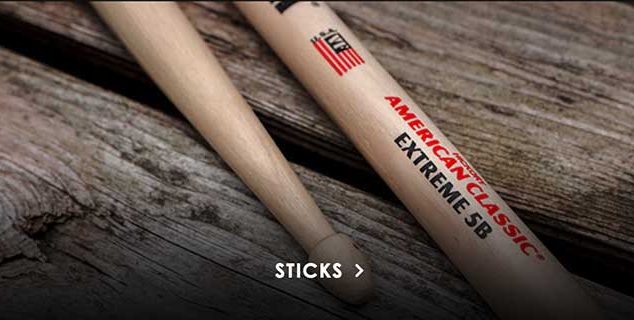EXERCISE #7: “TRIPLET ROLLS”

This exercise works on the same diddle & roll techniques as the “Duple Rolls” exercise, but with a triplet base.
• The pattern for this exercise uses a 1-1-2 count structure with 1 count of check, one count of diddle or roll pattern (repeated) and 2 counts of check, two counts of pattern.
• Maintain a consistent motion in the hands from the check pattern to the diddle and roll pattern. Practice with the play-along videos or tracks to make sure you’re staying in time (and not slowing down on the roll patterns).
• At the slowest tempo, strive for a full stick height on each stroke, utilizing the wrists and fingers to strengthen the quality of the double bounce. As you speed up, lower the stick height, but always strive to create a full bodied sound from the drum.
• Faster tempos require more fulcrum pressure to produce the double bounce. Listen to the spacing of the 32nd note bounces to regulate the fulcrum pressure.
• From medium to faster tempos, always maintain a consistent arm motion from check to diddle and roll pattern.
CLICK HERE TO DOWNLOAD THE MARCHING PERCUSSION 101 EXERCISE PACKET
Including Full Battery Percussion Score and Part Booklet
PLAY-ALONG VIDEO 1
Battery Only (No Tracks)
PLAY-ALONG AUDIO: BATTERY ONLY
PLAY-ALONG VIDEO 2
WITH PLAY-ALONG TRACKS
PLAY-ALONG AUDIO: WITH TRACKS
Alternate Exercise for Tenors and Bass Drums

TENORS:
• On RH and LH diddle patterns (m1-16), take the diddle “out” to the outside drum, keeping all other notes on drum 2.
• M17-24 move triplets around the drums. Be sure to keep the hand motion and stick height consistent throughout and always play in the correct zone for each drum. Avoid accenting the beginning of each triplet on the drum change.
BASS DRUMS:
• These are relatively simple triplet split patterns. Play each triplet starting with the right hand (RLR) and listen for consistency of sound & volume from right to left.
• Alternatively, more advanced bass lines may wish to add the drag & roll patterns to mirror the snare and tenor exercise.

PERFORMANCE WITHOUT LIMITATION…BY DESIGN
For nearly 60 years, we at the Vic Firth Company have focused on developing and manufacturing what has become the world’s most popular drumsticks, mallets, alternative implements, and accessories… with the best durability, feel, and sound options, across the widest variety of genres and styles.




